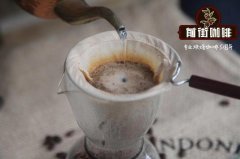What kind of flavor changes do light baking and moderate baking produce during baking? Between the two

Professional coffee knowledge exchange more coffee bean information please follow the coffee workshop (Wechat official account cafe_style)
Qianjie Coffee briefly describes how the flavor changes when light roasting and medium roasting
The heat of shallow roasting is mild, so the "enzyme action" of flowers and fruits retain the most sour aroma, and it is easy to smell the sour aroma of coffee. If the baking continues, that is, from the end of the first explosion to the middle baking before the second explosion, or even from just to the second explosion, most of the sour flavor of "enzyme action" has been cracked and replaced by the taste spectrum of "sugar browning reaction" (Sugar Browing) and "Mena reaction" instead. Moderate baking sugar browning mainly refers to caramelization and caramel aroma, while Mena reaction is more complex, which is a browning and aroma-making reaction of carbohydrates and amino acids, producing attractive aromas of nuts, rice and wheat, dark chocolate and cream chocolate.
Sucrose, which accounts for about 60.9% of the soybean weight, is the main raw material for caramelization. Sucrose is pyrolyzed into low molecular weight monosaccharides, glucose and fructose, and releases aroma and carbon dioxide, but as the furnace temperature rises to more than 180 ℃, these molecular weight monosaccharides continue to polymerize and concentrate to form darker medium molecular weight caramel components with a caramel aroma. Caramelization has been carried out to a little over 200 ℃, is coming to an end, and finally completely carbonized.
Important Notice :
前街咖啡 FrontStreet Coffee has moved to new addredd:
FrontStreet Coffee Address: 315,Donghua East Road,GuangZhou
Tel:020 38364473
- Prev

How does chlorogenic acid break down during baking? What is the relationship between water and chlorogenic acid? will produce
Professional coffee knowledge exchange More coffee bean information Please pay attention to coffee workshop (Weixin Official Accounts cafe_style) Front Street Coffee Brief Description Roasting Process and Decomposition of Chlorogenic Acid Chlorogenic acid will begin to decompose after heating. However, during the roasting process, moisture is continuously lost. Fast or slow moisture removal, more or less moisture removal will affect the flavor production (Mena reaction)
- Next

What kind of coffee is better? what's good for coffee? coffee is recommended.
Professional coffee knowledge exchange more coffee bean information please follow the coffee workshop (Wechat official account cafe_style) front street coffee in Honduras sweet orange manor manor Maraka Honduras sweet orange manor washing variety is Kaduai flavor is obvious grape orange peel creamy touch caramel tail rhyme and spice feel END
Related
- Beginners will see the "Coffee pull flower" guide!
- What is the difference between ice blog purified milk and ordinary milk coffee?
- Why is the Philippines the largest producer of crops in Liberia?
- For coffee extraction, should the fine powder be retained?
- How does extracted espresso fill pressed powder? How much strength does it take to press the powder?
- How to make jasmine cold extract coffee? Is the jasmine + latte good?
- Will this little toy really make the coffee taste better? How does Lily Drip affect coffee extraction?
- Will the action of slapping the filter cup also affect coffee extraction?
- What's the difference between powder-to-water ratio and powder-to-liquid ratio?
- What is the Ethiopian local species? What does it have to do with Heirloom native species?

